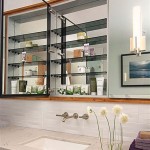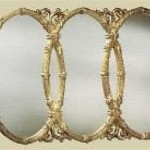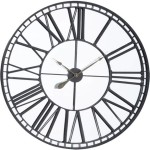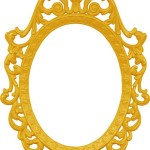How to Make a Lighted Mirror Vanity
A lighted mirror vanity adds a touch of glamour and practicality to any space. Building one can be a rewarding DIY project, blending customization with functionality. This article outlines the steps to create a beautiful and well-lit vanity, perfect for makeup application or daily grooming.
Choosing the Right Mirror
The foundation of any lighted mirror vanity is, of course, the mirror itself. Consider the overall dimensions of the vanity and the available space. A frameless mirror offers a clean, modern look, while a framed mirror can add a decorative touch. Thickness should be sufficient to support the weight of the lights and wiring, generally at least ¼ inch. Check the mirror for any distortions or imperfections before purchase.
Selecting the Lighting
Proper lighting is crucial for a functional vanity. LED strip lights are a popular choice due to their energy efficiency, brightness, and flexibility. Choose a color temperature that mimics natural daylight, ideally between 5000K and 6500K. Consider the length of the strips needed to adequately illuminate the mirror's perimeter. Warmer light temperatures (around 3000K) can create a softer, more ambient atmosphere, but may not be ideal for makeup application.
Alternatively, individual globe lights can be used for a vintage or Hollywood-inspired look. Ensure the bulbs are compatible with a dimmer switch for adjustable brightness. When using individual bulbs, carefully plan their placement for even light distribution across the mirror surface. Bulb wattage will influence brightness; higher wattage bulbs produce more light, but also generate more heat.
Building the Frame (Optional)
While a frameless mirror can be used directly, building a frame allows for greater customization and can provide a structure to mount the lights. Wood is a common choice due to its ease of workability and affordability. The frame's dimensions should accommodate the mirror size with a slight overlap to secure it in place. Consider adding a routed channel on the inner edge of the frame to recess the lighting, creating a cleaner, more professional finish.
Other framing materials include metal or PVC, which can offer different aesthetic qualities and durability. When using metal, ensure proper grounding to prevent electrical hazards. PVC is lightweight and moisture-resistant, making it suitable for humid environments.
Wiring the Lights
Safety is paramount when working with electricity. If unfamiliar with electrical wiring, consult a qualified electrician. For LED strip lights, a power supply unit is typically required to convert household voltage to the lower voltage used by the LEDs. Connect the strip lights to the power supply, following the manufacturer’s instructions. A dimmer switch can be incorporated into the circuit for adjustable brightness.
When using individual globe lights, wire them in parallel to ensure that if one bulb burns out, the others remain lit. Use appropriate gauge wiring for the voltage and current draw of the bulbs. Secure all wiring with appropriate fasteners and ensure no exposed wires are present.
Mounting the Mirror and Lights
Once the frame is built and the lights are wired, carefully attach the mirror to the frame using mirror adhesive or clips. Ensure the mirror is centered and secure. Mount the LED strips or globe lights to the frame using adhesive backing or mounting clips, ensuring they are evenly spaced and aligned. Conceal wiring as much as possible within the frame or behind the mirror.
The entire vanity unit can then be mounted to the wall using appropriate hardware. Ensure the wall is capable of supporting the weight of the vanity and mirror. Use a stud finder to locate wall studs for secure mounting. Alternatively, the vanity can be placed on a tabletop or dresser.
Finishing Touches
After mounting, add any desired finishing touches. This might include painting or staining the frame, adding decorative trim, or installing a shelf below the mirror. Consider cable management solutions to keep wires organized and hidden. A final inspection should be performed to ensure all lights are functioning correctly and all wiring is secure.
Building a lighted mirror vanity is a personalized project that can be tailored to individual preferences and needs. With careful planning and execution, the result will be a functional and stylish addition to any room.
:max_bytes(150000):strip_icc()/makesandmunchies-c136f898cca640faa72b6209012230cb.jpg?strip=all)
7 Diy Lighted Mirror Ideas To Add A Little Extra Shine Your Space

Diy Light Up Vanity Mirrors You Can Make Ohmeohmy Blog

How To Diy Vanity Mirror With Led Strip Lights

Diy Light Up Vanity Mirrors You Can Make Ohmeohmy Blog

How To Make A Vanity Or Bathroom Mirror With Strip Lights

Diy Light Up Vanity Mirror For 20 With Remote Lights

10 Diy Vanity Mirror Projects That Show You In A Diffe Light

25 Beautiful Diy Vanity Mirror That Is Easy And To Do Most Of This Projects Can Be Bathroom Makeover Small Mirrors

Diy Light Up Vanity Mirrors You Can Make Ohmeohmy Blog

How To Make A Vanity Or Bathroom Mirror With Strip Lights








